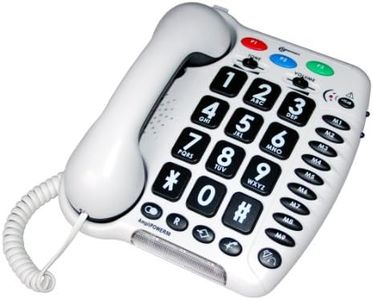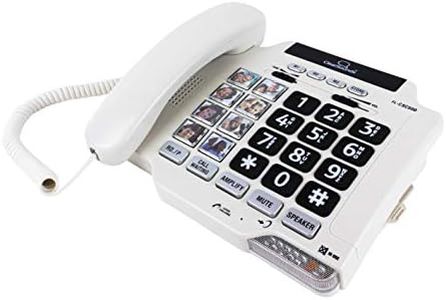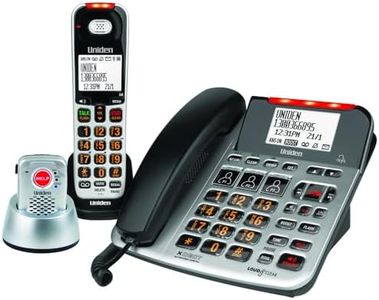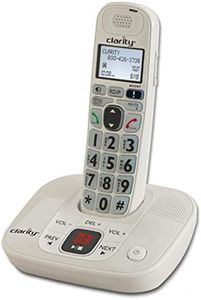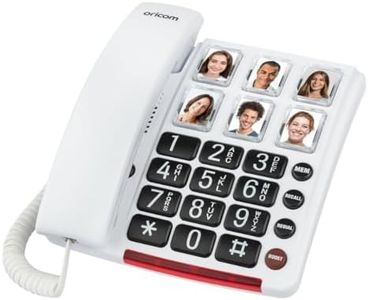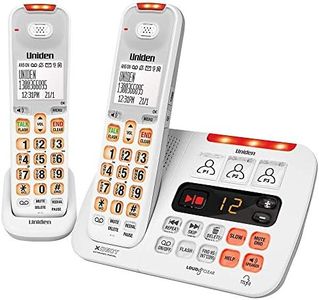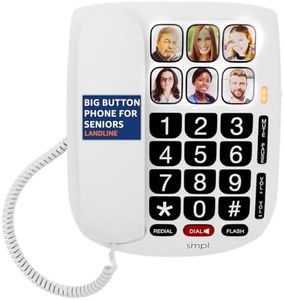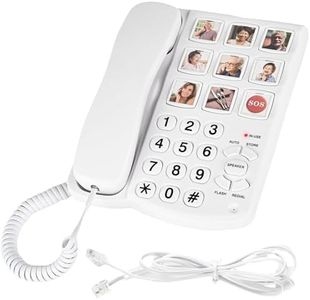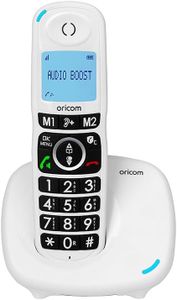We Use CookiesWe use cookies to enhance the security, performance,
functionality and for analytical and promotional activities. By continuing to browse this site you
are agreeing to our privacy policy
10 Best Amplified Phones
From leading brands and best sellers available on the web.Buying Guide for the Best Amplified Phones
Amplified phones are designed to help people who have difficulty hearing on traditional telephones. These phones boost the sound of incoming voices, making conversations clearer and easier to understand. Picking the right amplified phone depends on your hearing needs, daily habits, and whether you use accessories like hearing aids. Understanding key features and what they mean will help you find a model that truly fits your lifestyle and hearing requirements.Amplification Level (dB Gain)Amplification level refers to how much louder the phone can make the caller’s voice compared to a standard phone. It is measured in decibels (dB). The higher the dB, the stronger the amplification. Phones usually offer amplification from around 15 dB to 60 dB or more. For mild hearing loss, a lower range (15–30 dB) may be enough, while moderate to severe hearing loss calls for 40 dB or higher. Think about your hearing needs or check with an audiologist to match the amplification level to what helps you hear best.
Tone ControlTone control allows you to adjust the frequencies of the sound you hear, like bass and treble. This is important because some people have trouble with higher or lower pitches, even if the overall volume is loud enough. Phones with adjustable tone controls let you fine-tune the sound to better match your hearing loss pattern. This feature is helpful if you know certain pitches are harder for you to hear, making conversations warmer, clearer, or less distorted based on your preference.
Hearing Aid CompatibilityHearing aid compatibility means the phone won’t interfere with your hearing aid and is designed to work smoothly alongside it. If you use a hearing aid, look for phones labeled as hearing aid compatible (HAC). This ensures there won’t be buzzing or feedback noises that sometimes happen with regular phones, making your calls clearer and less frustrating.
Visual AlertsVisual alerts notify you about incoming calls using flashing lights or screen indicators instead of (or in addition to) sound. This is especially helpful if you sometimes miss phone rings, even amplified ones. Think about your home environment and when you’re most likely to need this feature; it’s particularly useful if you have severe hearing loss or often remove your hearing aids.
Ringer Volume and OptionsRinger volume is how loud the phone rings when someone calls. Some amplified phones have an extra-loud ringer, sometimes adjustable up to 100 dB or more. Multiple ringer settings, such as different melodies or vibration, give you flexibility to notice calls the way you prefer. If you often miss calls in noisy environments or large spaces, higher or adjustable ringer volume is important.
Ease of UseEase of use refers to how simple it is to operate the phone, including the size of buttons, clarity of the display, and straightforward controls. Large buttons, clear labeling, and simple menus make the phone easier for people with vision or dexterity issues. If you don’t want to navigate through complex menus or struggle to dial, prioritize a phone with user-friendly design elements.
